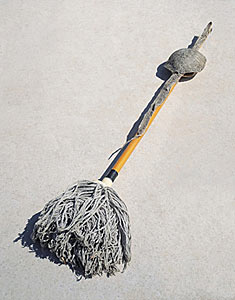
Born in 1954 in Xiamen (CN)
Lives and works in Paris (FR)

1995
Sculpture
Dimensions variables
Year of Purchase: 1995
‘Something of an osmosis between Chinese tradition and the Dadaist movement, Huang Yong Ping is in the process of formulating an original work assimilating, with great freedom, two cultures […]. He has based his work on ideas such as geomancy and Taoist philosophy, as well as on Chinese history in general […], and has long made use of that medium of thought, paper, reducing it into pulp with the use of water […]
Huang Yong Ping’s themes about Chinese symbolism […] appear rich in information and reveal a way of thinking as a result of the original form which he gives them.’1
‘Tortoise shell, snakeskin and dust are all part of traditional Chinese medicine. The brush has a relationship with the dust. Here it is disguised, appended to the snake. When the brush and the snake pass over the tortoise, the snake becomes a tortoise head. The image of these two animals sharing the same body symbolizes harmony in Chinese mythology. Here, shell, mythology and everyday object merge in a single block.’2
In 1989, Huang Yong Ping was invited by Jean-Hubert Martin for the exhibition: Magicians of the Earth, settled in Paris and travelled the world.
In Balai Laveur (Mop), snake, tortoise and mop are intertwined on the floor in frolics that are both physical and spiritual.
As a complex allegory of the balance between nature and science incorporated within the context of Western culture, Balai Laveur resounds with a peerless poetic presence.
1 Jean-Hubert Martin, Huang Yong Ping, National Museum of the Arts of Africa and Oceania, 1996.
2 Huang Yong Ping, translation by Fei Dawei.